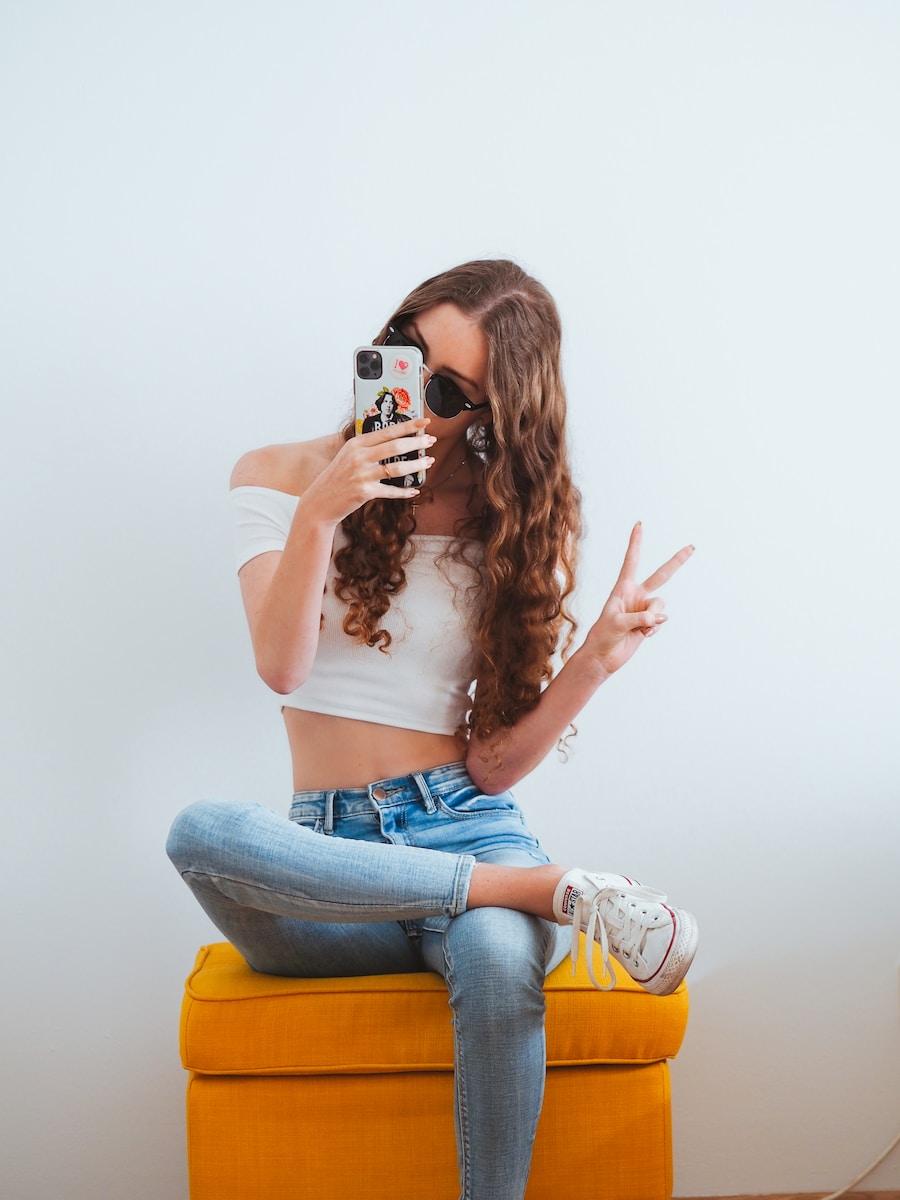In 2021, companies reported an average return of $5.20 for every dollar spent on influencer marketing. Today, businesses continue to invest more money into social media influencer marketing to increase sales. Staying abreast of influencer marketing statistics can help companies boost engagement and reach. Especially stats on industry growth, strategy, and trends.
Here are 20 influencer marketing statistics you should know:
1. Approximately 320 new influencer marketing-focused platforms and agencies entered the market over the last 12 months
Looking for influencers is no longer a major task for businesses. There are numerous online platforms like Upfluence and Post for Rent. They are equipped with features (such as industry filters and influencer-type categories) designed to make searching more precise and efficient. The most popular platforms also offer tools to help manage any resulting projects or contracts like communication and payment tools.
2. Influencer marketing is expected to continue its upward trajectory to potentially become a $6.5 billion industry by the end of 2021
Influencers play a significant role in improving sales for brands and ultimately their bottom line. It’s easier to connect with target customers by connecting with personalities that they are already following. Versus trying to attract everyone from scratch.
3. Around 65% of marketers increased their 2020 budget allocation for influencer marketing campaigns
This means more than half of active businesses are working with influencers on marketing their products to target customers. Regardless of your business’ size, it’s a good idea to consider creating your own influencer marketing strategy. In order to remain competitive.
4. The Number of Overall Instagram Users Grew 5 Times Over a Five Year Period
This continuous rise in the number of Instagram users should show businesses that Instagram provides the most opportunities to reach out to their target customers. When allocating a budget for influencer marketing, be sure to work with an influencer who has had proven success on Instagram.
5. For 37% of consumers, authenticity is the most important quality to have in sponsored posts
Aside from coming up with a short list of influencers with expertise that match your industry and platform of choice, make sure to review their posts. Go through their feed and find the authenticity in their posts. It will be easy to spot this because influencers who value authenticity will have content that’s passionate about the topic. They can share opinions that let readers know they’re speaking from experience. They are also relatable and engaging with their audience.
6. Micro-influencer campaigns are 6.7 times more efficient per engagement than influencers with large followings
Micro-influencers provide an authentic voice, making it easier to build trust with their audience. They keep a close relationship with their followers and make their recommendations feel like they’re coming from a friend. Businesses should choose to work with a micro-influencer. Especially when they need to build a strong and lasting relationship with their target market. This is the perfect strategy to employ when introducing a new product that needs a strong customer base.
7. Influencers are more direct in their recommendations.
With 74% issuing calls to action (CTAs), for example, encouraging someone to ‘buy it or try it.’ It’s easier for influencers to take a more direct approach in a marketing campaign. Influencer marketing studies show that they can get firsthand information about a product. Done by trying it themselves and documenting their experience. Versus asking other people for feedback. Thus their recommendations sound more natural and authentic. As a result, customers respond well to influencer CTAs on buying or trying the product or service.
If you want influencers to direct their audience to your blog, be sure to create a functional, visually appealing website. Consider DreamHost for hosting. It’s a low-cost web hosting service that offers just the right features to efficiently run your niche blog. It provides users with unlimited bandwidth, WordPress hosting, free domains, and a one-click web apps installer to help you start your blog in no time for as little as $4.95 a month. Visit DreamHost today, and take advantage of its discounts.
8. A survey shows that 82% of consumers would follow a recommendation by a micro-influencer


While customer feedback is a great way to encourage other customers to buy, there are still people who would prefer to listen to a micro-influencer. This is due to the engagement influencers have with their followers. It’s easier for followers to accept recommendations from micro-influencers because they admire and relate to them. They also tend to have already formed a strong relationship that makes it easier to trust product recommendations versus blindly accepting the opinions of the “average person” or other customers.
9. Influencers with 50,000-250,000 followers deliver a 30% better ROI per dollar spent
This data follows a general rule where there is an inverse relationship between ROI and the level of influencer. Personalities with a smaller number of followers tend to have an easier time converting their followers into buyers. Instead of searching for one influencer with 50,000 to 250,000 followers, you could opt for hiring numerous smaller influencers. However, you would need to factor in the additional time, management work, and resources required to work with more than one person. While the ROI can be potentially higher, the cost of running a campaign can also be steep.
10. Instagram posts and stories ranked as the most effective content formats, with at least 75% of influencers experiencing more engagement from this type of content
It’s interesting to note that despite the concerns over fake followers, Instagram is still considered the most effective platform for influencer marketing. People using social media are always scrolling, their short attention span is not open to any content that is too salesy. Instagram’s short-form and visually focused content makes it easy to connect with the audience. Influencers sound more like peers when making recommendations, and readers can engage more easily.
Instagram posts and stories also receive more engagement because the number of users on the platform continues to grow, making it easier for influencers to increase audience base. For businesses, this is a clear indication that they should focus more on working with influencers who are great at engaging their audience through Instagram posts and stories.
11. Around 77% of survey respondents claimed that they ran their influencer campaigns in-house
For businesses, especially ones that have just begun considering the use of influencer marketing as a strategy, this is a clear indication that it’s possible to minimize costs by not hiring an agency. However, you can also hire freelance experts through online job platforms like Fiverr and get the same level of professional results from experienced marketers at a fraction of the cost.
12. According to a survey, 71% of marketers still use the traditional way of finding influencers to hire for a campaign: by searching directly on social media platforms
Marketers still prefer to directly search social media platforms to find influencers they want to work with instead of using a database, agencies, or even browser searches. One of the most likely reasons that this happens is because marketers want to see influencer posts for themselves. They want to get a feel for an influencer’s overall personality and how engaged they are with their audience.
However, businesses should consider diversifying their search strategy, specifically using influencer databases and platforms. These tools provide additional features and tools that can help them manage their influencer marketing campaigns more efficiently.
13. In 2020, 71% of marketers were more aware of Federal Trade Commission (FTC) guidelines governing influencer marketing


The Federal Trade Commission (FTC) outlined a set of rules governing influencer marketing that marketers were not entirely aware of in the beginning. However, brands are becoming more and more aware of FTC regulations since influencer marketing is becoming a popular and effective means to attract customers.
Small businesses looking to implement their own influencer marketing strategy should do proper research on FTC regulations. This will help you avoid hefty fines from being unaware of guidelines governing required disclosure and the use of hashtags.
14. A majority of marketers, 81%, cite content quality as the primary consideration in picking the right influencers
Marketers prefer searching social media platforms directly for influencers they want to work with because they want to see what type of content they produce, how they introduce a product or service, and how effective they are at engaging their audience. Quality content that is relevant, timely, and tailored to its target audience leads to more conversions, which means more money for the business.
15. In 2021, at least 50% of marketers were most concerned about fake followers
The prevalence of fake followers and inauthentic engagement is now the top concern of at least half of all businesses engaging in influencer marketing campaigns. This is one of the the more concerning influencer marketing. When an influencer has inauthentic followers, they aren’t as impactful; if the influencer’s followers aren’t interested in their brand, they won’t care what products they recommend. One metric that measures the likelihood that influencers have fake followers is the ratio of their followers to engagement. Influencers with thousands of followers that only get a couple of dozen “likes” or comments per post most likely have followers with inactive accounts. Marketers are primarily concerned with identifying fake followers and inauthentic engagement among influencers.
16. ROI measurement still remains a primary concern for 78% of companies
One major concern of marketers working with influencers is determining return on investment (ROI). Initially, the level of engagement with an influencer’s post about a company’s product or service can seem like an easy answer, however, not all engagement converts into sales. There are also different types of engagement and marketers need to analyze which type of engagement is most ideal for them.
Influencer (Earned) Media Value is one way to measure influencer marketing ROI. It assigns a dollar value to influencer engagements. It also further identifies the number of people participating in different types of engagements such as likes, shares, clicks on a link, and comments.
17. Top key performance indicators (KPIs) for influencer marketing are engagement, sales, and impressions
While measuring actual ROI for influencer marketing can be complicated, key performance indicators (KPIs) can help determine the success potential of your campaign. This allows marketers to have a general idea of whether to invest more time and budget toward influencer marketing campaigns or not. Engagement is considered the most important KPI, followed by conversions and impressions or views.
For businesses who are just starting to use influencer marketing, this is a great way to estimate if you have a successful campaign. Knowing the figures for these factors will also help you adjust your strategy to improve the results.
18. The industry as a whole will be worth between $5 and $10 billion by 2022
More and more businesses are expected to invest in influencer marketing strategies to boost their sales. This means fiercer competition so businesses should plan ahead to develop innovative strategies that will make their influencer marketing campaign stand out. Research new and existing tools that can help you develop better marketing plans and measure performance better.
19. Influencer tiers are evolving, with nano-influencers who hold a maximum of 10,000 followers, becoming the more preferred personalities with which to work
Influencers with a smaller number of followers are more personal and engaging with their audience. This shows how personalization will continue to be a dominating factor in building a strong customer base. With this in mind, businesses should start prospecting for potential nano-influencers with which to work. Consider using an influencer database to identify small and up-and-coming influencer personalities and to connect with them as early as possible.
20. Tiktok and Twitch are emerging as more prevalent influencer marketing channels with 66% of its followers under the age of 30
Aside from Instagram, TikTok and Twitch are becoming major players in influencer marketing. Research shows that audiences under 30 prefer short-form video network TikTok as a means of engaging with brands. On the other hand, online streaming platform Twitch is becoming popular not only to gamers but also for other brand ambassadors. This means businesses targeting a younger market should also consider working with influencers popular in these platforms to maximize their brand’s reach.
Frequently Asked Questions
Influencer marketing is quickly rising with businesses showing intent on dedicating more of their budget to this strategy each year. And while we’ve provided some statistics you can use to reposition your business, some readers might still have questions. We’ve compiled a list of commonly asked questions about influencer marketing.
1. What is the most reliable way to measure the ROI for influencer marketing?
There are a number of factors that marketers use to measure ROI from influencer marketing campaigns. Influencer (Earned) Media Value is considered by 78% of marketers as the best way to measure influencer marketing success. The calculation is somewhat complicated but the idea is that it assigns a dollar value for influencer engagements. It further identifies the number of people in different types of engagements such as likes, shares, click on a link, and so on.
2. What are some of the tools marketers use to measure influencer marketing success?
Influencer marketing campaigns are usually long and meticulous This is why there are automation tools to help run and manage influencer marketing strategies. AspireIQ (formerly Revfluence) is a platform that automates searches for influencers on social media-based using your specific filters. There’s also Neoreach that not only assists in influencer discovery, but with campaign management as well.
3. At what time of the year are there the most influencer marketing campaigns?
One would think that the marketers would spend more on influencer marketing campaigns near the end of the year to coincide with the year-end sales. However, it’s interesting to note that the average brand budgets 32% of its influencer spending in the First Quarter, 28% in the Second Quarter, 21% in the Third Quarter, and 19% in the Fourth Quarter.
This may be because it’s easier to market during the busy season using a different strategy like email marketing and direct promotions. Businesses would rather focus on their influencer marketing campaigns during seasons when customers are less likely to make a purchase.
4. How much do brands pay influencers?
Most influencers will set their own rates unless they use a platform like AspireIQ (formerly Revfluence). The pricing usually depends on the type of influencer, the type and number of posts you want to have, the length of the campaign, and on which platform(s) you want your ads to appear. An article from Ignite Visibility reported that Instagram Influencers are paid an average of $1,000 per 100,000 followers, Snapchat influencer fees start at $500 for a 24-hour campaign, and YouTube influencers are paid roughly $2,000 per 100,000 followers.
5. How do you decide which type of influencer to hire?
Micro-influencers are a great choice for businesses looking to develop personal relationships with their target audience, because a smaller audience allows micro-influencers to bond with the people who follow them regularly. Celebrity influencers are a great way to earn social recognition quickly and reach multiple audiences across various channels, even if their usual fans are not similar to your target market.
Bottom Line
Influencer marketing continues to evolve as social media platforms become more dynamic and more tools become available to measure its success. Businesses that aim to reach more of their target market online should adapt strategies to maximize the ROI of their influencer marketing campaigns. Keep these key statistics in mind the next time you review your marketing strategies.





















Leave a Reply
View Comments